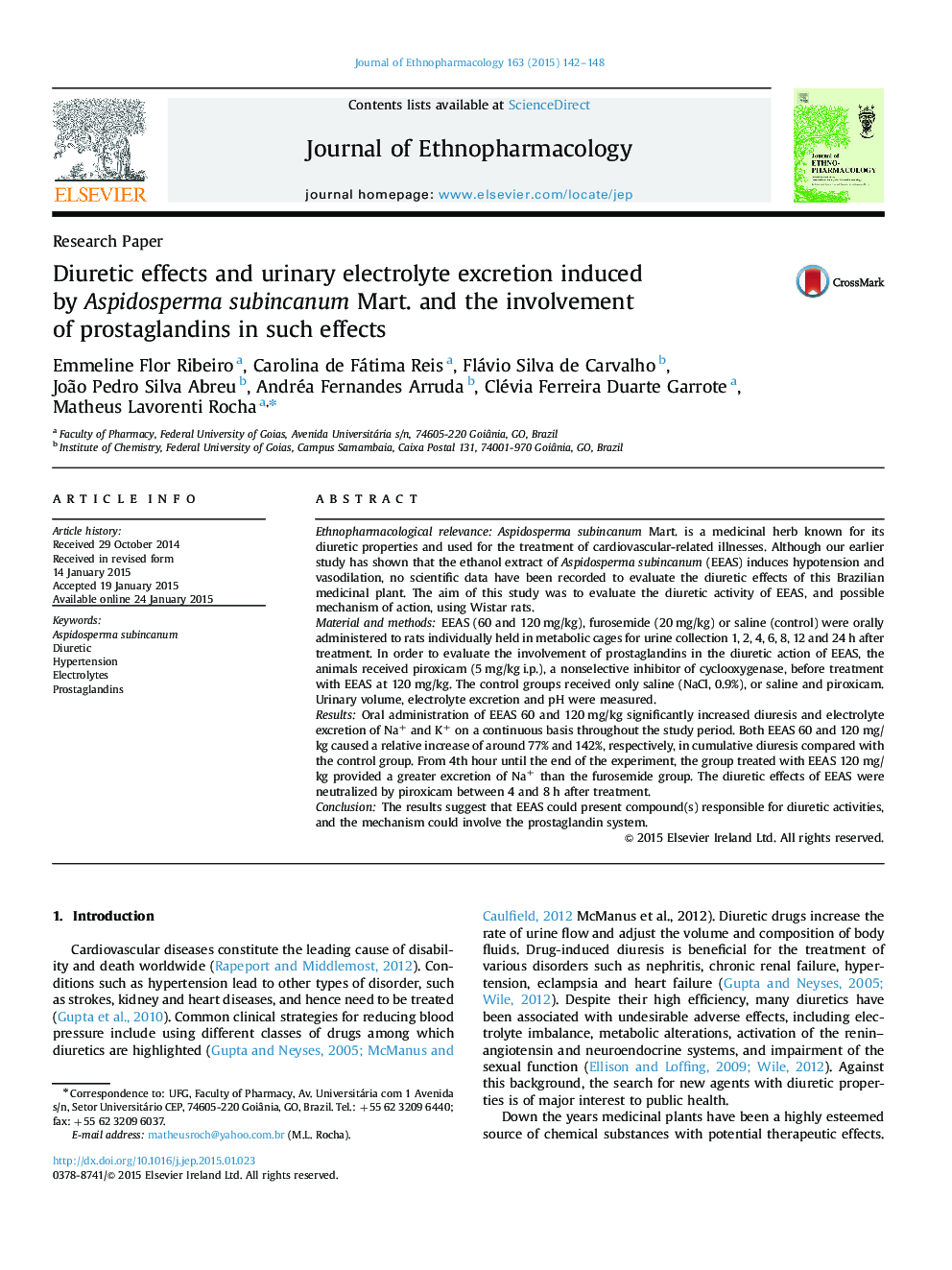| Article ID | Journal | Published Year | Pages | File Type |
|---|---|---|---|---|
| 2545027 | Journal of Ethnopharmacology | 2015 | 7 Pages |
Ethnopharmacological relevanceAspidosperma subincanum Mart. is a medicinal herb known for its diuretic properties and used for the treatment of cardiovascular-related illnesses. Although our earlier study has shown that the ethanol extract of Aspidosperma subincanum (EEAS) induces hypotension and vasodilation, no scientific data have been recorded to evaluate the diuretic effects of this Brazilian medicinal plant. The aim of this study was to evaluate the diuretic activity of EEAS, and possible mechanism of action, using Wistar rats.Material and methodsEEAS (60 and 120 mg/kg), furosemide (20 mg/kg) or saline (control) were orally administered to rats individually held in metabolic cages for urine collection 1, 2, 4, 6, 8, 12 and 24 h after treatment. In order to evaluate the involvement of prostaglandins in the diuretic action of EEAS, the animals received piroxicam (5 mg/kg i.p.), a nonselective inhibitor of cyclooxygenase, before treatment with EEAS at 120 mg/kg. The control groups received only saline (NaCl, 0.9%), or saline and piroxicam. Urinary volume, electrolyte excretion and pH were measured.ResultsOral administration of EEAS 60 and 120 mg/kg significantly increased diuresis and electrolyte excretion of Na+ and K+ on a continuous basis throughout the study period. Both EEAS 60 and 120 mg/kg caused a relative increase of around 77% and 142%, respectively, in cumulative diuresis compared with the control group. From 4th hour until the end of the experiment, the group treated with EEAS 120 mg/kg provided a greater excretion of Na+ than the furosemide group. The diuretic effects of EEAS were neutralized by piroxicam between 4 and 8 h after treatment.ConclusionThe results suggest that EEAS could present compound(s) responsible for diuretic activities, and the mechanism could involve the prostaglandin system.
Graphical abstractFigure optionsDownload full-size imageDownload high-quality image (192 K)Download as PowerPoint slide
